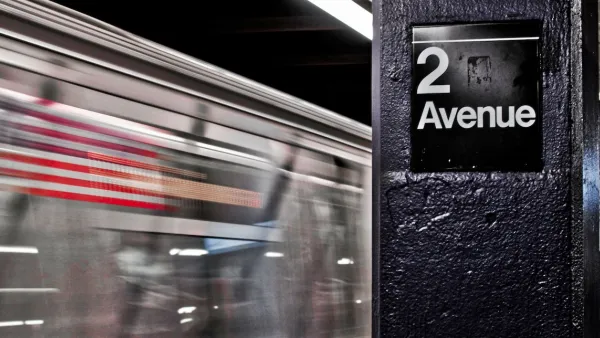As New York City faces its worst financial crisis in 2 decades, a NYC D.O.T. study was released showing that from 2003-2007, the increase in jobs and people was accompanied by a slight decrease in traffic due primarily to increased transit usage.
"The study is the first analysis to take an overall look at traffic and transit patterns in New York during the boom years from 2003 through 2007, when, according to the report, the city added more than 200,000 jobs and its population increased by more than 130,000."
"'What you see is that for the first time since at least World War II, all of the growth in travel in the city has been absorbed by non-auto modes, primarily by mass transit,' said Bruce Schaller, New York's deputy transportation commissioner for planning and sustainability, who wrote the study, which is to be released on Monday (12/15).
The study revealed that "the volume of traffic on the streets and highways remained largely unchanged, in fact declining slightly. Instead, virtually the entire increase in New Yorkers' means of transportation during those robust years occurred in mass transit, with a surge in subway, bus and commuter rail riders."
"'...we've really turned a corner in the city in that all of the growth in travel over the last four years has been absorbed by mass transit and so, in terms of the city's sustainability goals, this is very encouraging to see,' said Schaller."
FULL STORY: New York City Grew, but Traffic Didn’t

National Parks Layoffs Will Cause Communities to Lose Billions
Thousands of essential park workers were laid off this week, just before the busy spring break season.

Retro-silient?: America’s First “Eco-burb,” The Woodlands Turns 50
A master-planned community north of Houston offers lessons on green infrastructure and resilient design, but falls short of its founder’s lofty affordability and walkability goals.

Delivering for America Plan Will Downgrade Mail Service in at Least 49.5 Percent of Zip Codes
Republican and Democrat lawmakers criticize the plan for its disproportionate negative impact on rural communities.

Test News Post 1
This is a summary

Test News Headline 46
Test for the image on the front page.

Balancing Bombs and Butterflies: How the National Guard Protects a Rare Species
The National Guard at Fort Indiantown Gap uses GIS technology and land management strategies to balance military training with conservation efforts, ensuring the survival of the rare eastern regal fritillary butterfly.
Urban Design for Planners 1: Software Tools
This six-course series explores essential urban design concepts using open source software and equips planners with the tools they need to participate fully in the urban design process.
Planning for Universal Design
Learn the tools for implementing Universal Design in planning regulations.
EMC Planning Group, Inc.
Planetizen
Planetizen
Mpact (formerly Rail~Volution)
Great Falls Development Authority, Inc.
HUDs Office of Policy Development and Research
NYU Wagner Graduate School of Public Service



























